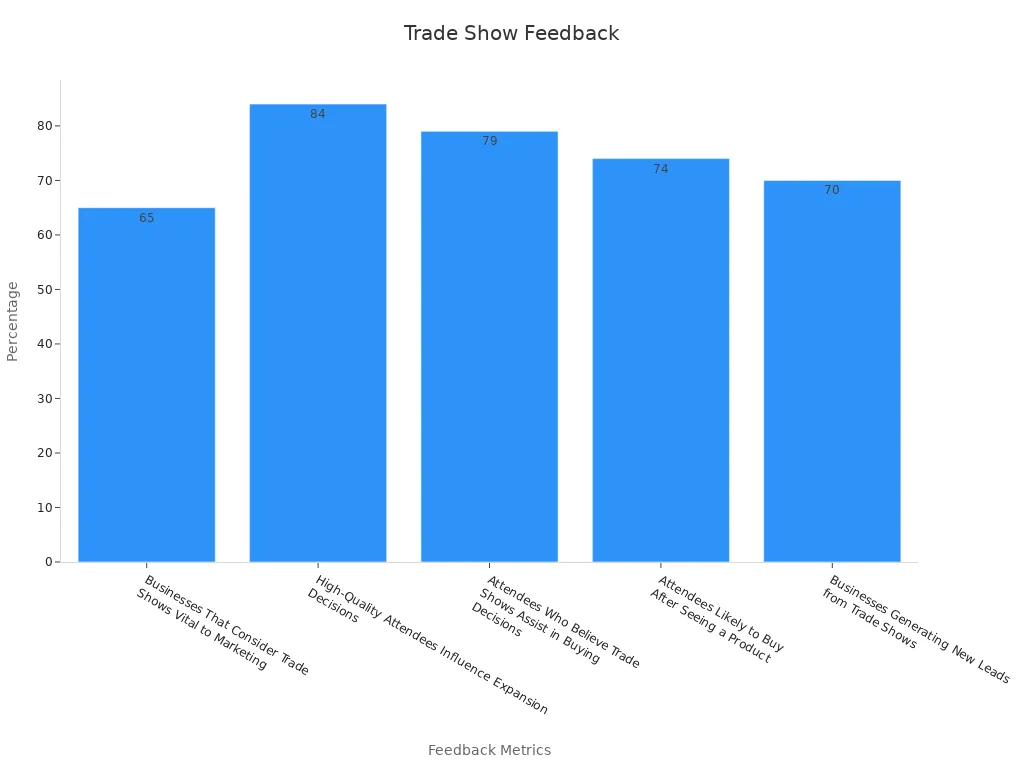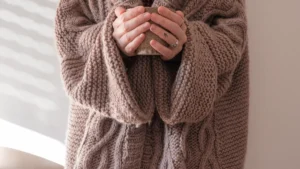
Sourcing high-quality linen knit fabrics can make your brand stand out. Fabric quality plays a crucial role in how clothes feel, look, and endure over time. People appreciate when your clothing is both stylish and durable. High-quality linen knit fabrics are shipped to over 197 countries globally, with the U.S. alone receiving 223,572 shipments annually, accounting for 27% of the market. This highlights the trust and popularity linen has earned.
For eco-friendly brands, sourcing high-quality linen is even more essential. Choosing sustainable materials like linen not only helps protect the planet but also aligns with customer expectations for responsible fashion.
Key Takeaways
Good linen knit fabrics make your brand look better. They mix style with strength and are great for eco-friendly clothes.
Check fabric quality using the Four-Point System and GSM. This helps you pick materials that match your brand’s needs.
Work with reliable suppliers to get better deals, faster shipping, and top-quality fabrics for your items.
Look at different places to buy fabric, like mills, wholesalers, or online stores, to find the best linen knit fabrics.
Always ask for fabric samples before buying a lot. This makes sure the fabric feels and looks right for your brand.
Understanding Linen Knit Fabrics

What Are Linen Knit Fabrics
Linen knit fabrics mix linen’s natural beauty with soft, stretchy knits. Woven fabrics are made by crossing threads at right angles. Knitted fabrics, however, are made by looping yarns together. This makes them softer and more flexible. Linen in knit form stays breathable and strong but feels more relaxed. These fabrics are great for lightweight clothes that are comfy and stylish.
You’ll often see linen knit fabrics in summer or casual outfits. They’re airy, keep you cool, and absorb moisture well. They’re perfect for brands that want to combine eco-friendly materials with trendy designs.
Unique Qualities of Knit Fabrics
Knit fabrics are known for being comfy and high-performing. They stretch more than woven fabrics, making them great for activewear and everyday clothes. Here’s a simple comparison to show their benefits:
Property | Other Fabrics | |
|---|---|---|
Strength Against Bursting | Higher | Lower |
Pulling Strength | Higher | Lower |
Stretchability | Greater | Lesser |
Wear Resistance | Superior | Inferior |
Shape Holding | Better | Worse |
Pilling (Fuzz) Tendency | Lower | Higher |
Airflow | Excellent | Moderate |
Water Absorption | High | Low |
These features make knit fabrics a top pick for brands focused on comfort and durability. Research shows knit types like Jersey and Pique resist shrinking and fuzzing. This keeps clothes looking good even after many washes.
Why Choose Linen Knit Fabrics for Your Brand
Linen knit fabrics are a smart pick for quality-focused brands. Fashion trends show more people want linen for its comfort and eco-friendliness. Adding linen knit fabrics to your line can meet this demand and make your brand unique.
These fabrics also fit the growing need for sustainable materials. Linen breaks down naturally and uses fewer resources to make. By choosing linen knit fabrics, you offer great products and show your care for the planet.
Key Things to Think About When Choosing Fabrics
When picking fabrics, like linen knit fabric, think about key points. This helps you find good materials that match your brand’s goals. Let’s look at what matters most.
Checking Fabric Quality
Good fabric makes your brand look better. It also lasts longer, which customers love. To check fabric quality, use tools like the Four-Point System. This system gives points based on fabric flaws:
Flaw Size (inches) | Points Given |
|---|---|
Up to 3 | 1 |
3 to 6 | 2 |
6 to 9 | 3 |
Over 9 | 4 |
Another way to check is by GSM (Grams per Square Meter). GSM shows how thick and dense the fabric is. For example:
High GSM fabrics are strong and last longer.
Low GSM fabrics are light and great for summer clothes.
Pro Tip: Always ask for fabric samples before buying a lot. This lets you feel the fabric’s stretch, softness, and airflow.

Choosing Eco-Friendly Options
Using eco-friendly fabrics is very important now. Customers want brands to care about the planet. Picking sustainable fabrics can make your brand special. Look for suppliers with these certifications:
Certification/Program | What It Means |
|---|---|
Aims to cut carbon use and recycle more by 2050. | |
Eco-Design Rules | Focuses on making long-lasting, recyclable products. |
Extended Producer Responsibility (EPR) | Makes companies handle product recycling and waste. |
Digital Product Passport | Shares clear eco-info about products for buyers. |
Certifications like IVN and Certified Responsible Source™ Textiles also show fabrics are made ethically and safely.
Fun Fact: Linen is one of the most eco-friendly fabrics. It uses less water and fewer chemicals, making it great for green brands.
Picking Trustworthy Suppliers
Good suppliers are key to getting the best fabrics. Check their history, how they communicate, and if they meet your needs. A good supplier delivers on time and offers custom options, like special colors or knits.
Studies show that supplier reliability, quality, and cost are very important. Some suppliers even use smart tech to avoid delays and problems.
Working closely with suppliers can help you get better deals. You might get lower order limits or faster delivery times. This is helpful when working with overseas suppliers, like those in China.
Managing Costs Effectively
Keeping costs low is important when buying fabrics. You need to save money but still get good quality. With smart planning, you can balance both.
1. Check Prices from Many Suppliers
Don’t pick the first supplier you find. Contact several and ask for prices. Comparing them helps you find the best deal. Some suppliers give discounts for big orders or long-term deals. Others might offer free shipping or quick delivery. These extras can save you money over time.
Tip: Don’t just focus on price when choosing suppliers. Think about their dependability, fabric quality, and eco-friendly practices. Paying a little more might be worth it if they meet all these needs.
2. Order the Right Amount
Buying too much fabric can waste your money. Buying too little can make each piece cost more. Figure out how much you really need. If you’re new, look for suppliers with small minimum order amounts. This lets you test without spending too much.
3. Learn to Negotiate
You don’t have to be a big company to negotiate. Many suppliers are open to lowering prices. Share your budget and ask for better rates. You can also ask to pay in parts instead of all at once. This helps if you’re working with suppliers from other countries.
4. Choose Sustainable Fabrics
Eco-friendly fabrics like linen knit may seem costly at first. But they last longer, so you’ll have fewer returns or complaints. Plus, customers like green products and may pay more for them. This can increase your profits.
Fun Fact: Making linen uses less water and energy than other fabrics. It’s a smart and affordable choice for eco-friendly brands.
5. Plan Ahead to Avoid Extra Fees
Rushing orders can cost you more. Suppliers often charge extra for fast production or shipping. Avoid this by planning early. Make a schedule for your production and stick to it. This saves money and reduces stress.
6. Watch Your Spending Closely
Track how much you spend on fabrics. Use tools like spreadsheets to see where your money goes. Are shipping costs too high? Are there fees you can avoid? Checking your spending often helps you find ways to save.
Pro Tip: Build a good relationship with your suppliers. Being friendly can lead to better prices, faster service, and helpful advice on saving money.
By managing costs wisely, you can keep your fabrics high-quality and stay on budget. This helps your brand succeed and stay competitive.
Where to Find High-Quality Linen Knit Fabrics
Finding good sources for linen knit fabrics can seem tricky. But with the right steps, it gets easier. You can check out trusted mills, wholesalers, or even trade shows. Let’s explore these options.
Reliable Fabric Mills and Makers
Start with well-known fabric mills for top-quality materials. These mills focus on making great fabrics and often let you customize them for your brand.
Here’s how to find trusted fabric suppliers:
The Functional Fabric Fair exhibitor directory is a great tool. It lists many mills, including those offering linen knit fabrics. You can see their products and connect with them.
Many mills share fabric details like GSM, stretch, and material mix. This helps you check quality before buying.
Look for certifications like GOTS or OEKO-TEX. These show the fabrics are safe and eco-friendly.
Pro Tip: Build a good relationship with mills. This can lead to perks like smaller order sizes or faster production. Ask about custom colors or designs to make your brand unique.
Wholesalers and Sellers
Wholesalers are key in the fabric supply chain. They link you to many fabric choices at good prices. If you’re new or need small amounts, wholesalers are a smart choice.
Here’s a quick look at where to find linen knit fabrics:
Where to Buy Fabrics |
|---|
Local Stores |
Online Shops |
Wholesalers |
Why choose wholesalers? They help meet the rising demand for eco-friendly fabrics. With 62% of buyers wanting natural materials, wholesalers offer what’s in demand. They also stock a variety of fabrics, from light linen jersey to thicker options.
Fun Fact: Many wholesalers now have online stores. You can browse, request samples, and order without leaving home.
Trade Shows and Meetups
Trade shows are great for finding new suppliers and seeing fabrics up close. These events bring together mills, sellers, and buyers, making it easy to find the right linen knit fabrics.
Here’s why trade shows are helpful:
79% of visitors say trade shows help them decide what to buy.
74% of visitors are likely to buy after seeing products at a show.
Many brands find new suppliers and deals at these events.

Popular trade shows include Première Vision Paris and Texworld USA. These events feature many fabrics, including eco-friendly ones like linen knit. You can meet suppliers, ask questions, and even negotiate prices.
Tip: Before going to a trade show, list what you need. Write down fabric types, certifications, or order sizes. This keeps you focused and saves time.
Online Marketplaces for Knit Fabrics
Online marketplaces are an easy way to find linen knit fabrics. These websites connect you with sellers from all over the world. You can explore many options to match your brand’s needs. Whether you want unique styles or eco-friendly materials, online shopping saves time and effort.
Why Use Online Marketplaces?
Online platforms make fabric sourcing simple. You can look through thousands of choices, compare costs, and read reviews—all without leaving home. Many sites also let you customize fabrics to fit your brand’s needs. This makes them a great option for both new and experienced brands.
Trusted Platforms for Linen Knit Fabrics
Here are some popular online marketplaces to check out:
Ravelry: This platform is great for finding yarn and knit fabrics. It has an active community and user reviews to help you trust sellers. Detailed product info makes choosing fabrics easier.
Etsy: Etsy is loved by small businesses for its custom options. Sellers often share insights about fabric trends and customer needs. Reviews and ratings help ensure you get quality products.
Alibaba: For bulk orders, Alibaba offers many fabrics at good prices. Suppliers provide details like GSM and material mix, making it easier to judge quality.
Fabric.com: Owned by Amazon, this site focuses on fabrics, including linen knit. It’s easy to use and offers reliable shipping, making it a favorite for many brands.
Tips for Buying Fabrics Online
Keep these tips in mind when shopping for fabrics online:
Read Seller Reviews: Check ratings and feedback to find trusted sellers.
Order Samples: Ask for swatches to feel the fabric before buying more.
Compare Prices: Look at multiple sellers to find the best deal.
Check Certifications: If you want eco-friendly fabrics, look for labels like GOTS or OEKO-TEX.
Pro Tip: Use filters to narrow your search. Sort by material, price, or seller ratings to find the best match for your brand.
Online marketplaces are a great resource for finding linen knit fabrics. With careful research and smart shopping, you can get high-quality fabrics that fit your brand’s goals.
Questions to Ask Suppliers
Fabric Composition and Weight Details
When buying linen knit fabric, knowing its makeup and weight is key. Fabric composition is like a recipe. It shows the materials used and their percentages. This helps ensure your products are high-quality and meet customer needs.
Ask suppliers for detailed fabric information. If you’re unsure about the details, send samples to labs for testing. Labs can check the fiber types and amounts using special tools. This step is important to maintain quality and follow industry rules.
Also, ask about the fabric’s GSM (Grams per Square Meter). GSM tells you how thick or dense the fabric is. Higher GSM fabrics are stronger, while lower GSM ones are lighter and better for summer clothes. Knowing this helps you pick the right fabric for your brand.
Pro Tip: Always get fabric samples before ordering in bulk. Feeling the fabric’s softness, stretch, and weight can help you decide better.
Minimum Order Quantities (MOQ) and Lead Times
MOQs and lead times affect how you plan production. Many suppliers have a minimum order size, which can be tough for new brands. Ask about their MOQ and see if they allow smaller orders. Building a good relationship with suppliers can help with flexibility.
Lead times show how fast you’ll get your fabric. Delays can mess up your schedule and leave you without enough stock. Talk to suppliers about realistic timelines. Share your schedule and ask if they can meet your deadlines.
Looking at past orders can help you manage MOQs and lead times. Use tools to predict how much fabric you’ll need. This saves money and ensures you always have enough fabric.
Tip: Start with suppliers offering low MOQs and quick delivery. This gives you more options as your business grows.
Certifications for Sustainable Linen
Sustainability matters to both brands and customers today. When sourcing linen knit fabric, ask suppliers for proof of eco-friendly practices. Certifications show the fabric is made responsibly and safely.
Some important certifications include:
GOTS (Global Organic Textile Standard): Confirms the fabric is organic and eco-friendly.
OEKO-TEX Standard 100: Ensures the fabric has no harmful chemicals.
European Green Deal Compliance: Shows efforts to cut carbon use and recycle more.
These certifications boost your brand’s trustworthiness and meet the demand for green products. Customers often pay more for eco-friendly items, making this a smart choice for your brand.
Fun Fact: Linen is one of the most eco-friendly fabrics. It uses less water and energy, making it great for brands that care about the planet.
Payment and Shipping Terms
When buying linen knit fabrics, knowing payment and shipping rules helps. It keeps your cash flow steady and avoids surprises. Here’s what to check.
Payment Terms to Talk About
Before ordering, ask about how to pay. Common options are:
Advance Payment: Pay everything before getting the fabric. This is usual for small orders or new suppliers.
Partial Payment: Pay part upfront (like 30%) and the rest later. This splits the risk fairly.
Net Terms: Pay after a set time (like 30 days) once you get the goods. This works well with trusted suppliers.
Tip: Check if prices include taxes or extra fees. Hidden costs can add up fast!
Shipping Terms to Confirm
Shipping affects your delivery time and budget. Discuss these points with your supplier:
Incoterms: These explain who handles shipping and customs. For example, FOB means the supplier ships to the port, and you handle the rest.
Shipping Methods: Air shipping is quick but costly. Sea shipping is cheaper but slower. Pick based on your needs.
Tracking Options: Ask if you’ll get tracking info. This helps you plan better.
Shipping Method | Cost | Speed | Best For |
|---|---|---|---|
Air Freight | High | Fast | Urgent orders |
Sea Freight | Low | Slow | Bulk or large orders |
Pro Tip: Ask for a shipping cost breakdown. This keeps things clear and avoids overpaying.
By talking about payment and shipping early, you’ll avoid problems. Good communication makes sourcing easier and smoother!
Overcoming Challenges in Fabric Sourcing
Spotting Real High-Quality Linen
Finding real, high-quality linen can seem hard, but simple tests help. Try the burn test first. Real linen burns brightly, leaves gray ash, and smells like paper. Another way is using a microscope. It shows linen fibers as long, cylinder shapes with tiny nodes. For deeper checks, chemical tests like phloroglucinol turn linen red.
The feel and strength of linen make it unique. Good linen feels crisp and a bit rough, unlike soft cotton. It’s also stronger and absorbs up to 20% of its weight in water. Here’s a quick table to compare:
Characteristic | Linen | Cotton |
|---|---|---|
Texture | Crisp, slightly rough | Soft, fluffy |
Durability | Very strong | Less strong than linen |
Absorbency | Absorbs a lot (20%) | Absorbs less (25%) |
Where linen comes from also matters. Belgium and France grow top-quality flax, making their linen the best. Keep this in mind when picking fabrics.
Balancing Price and Quality
Balancing price and quality is a big challenge in fabric buying. Cheap fabrics might save money now but hurt your brand later. Focus on value instead. High-quality linen costs more but lasts longer and reduces complaints or returns.
Compare prices from different suppliers. Look for bulk discounts or deals for long-term orders. Negotiating can also save money. Share your budget and ask for better prices or payment plans.
Plan your orders wisely. Buying too much fabric ties up money. Buying too little raises costs per piece. Use tools to predict how much you’ll need to avoid waste or shortages.
Pro Tip: Choosing eco-friendly fabrics like linen can improve your brand’s image and attract green shoppers.
Building Good Supplier Relationships
Good supplier relationships are key to smooth sourcing. Working closely with suppliers gets you better prices, faster shipping, and higher-quality fabrics. Start by finding your most important suppliers. Use a scoring system to check their reliability, quality, and communication.
Here’s how managing supplier relationships (SRM) helps brands succeed:
Achievement | Challenges | Outcomes |
|---|---|---|
Supplier Segmentation | Picking key suppliers from many options | Sorted 30 suppliers, tested 5, and kept 4 great ones. |
Driving Impact | Solving supply chain risks early | Reduced risks and kept business running with two main suppliers. |
Unlocking Innovation | Using data for better teamwork | Gained financial benefits through smarter, data-based decisions. |
Talk to suppliers often. Set up regular meetings to solve problems, share ideas, and find new chances to work together. Training your team in SRM can also strengthen these partnerships.
Trust takes time to build, but it’s worth it. Strong supplier ties can give you access to better fabrics and deals.
Handling Supply Chain Problems
Supply chain problems can slow down production and delay launches. But with smart planning, you can avoid big issues. Here are some simple ways to handle these challenges.
First, map out your supply chain. This means listing every step, from getting materials to delivering products. It helps you find weak spots, like depending too much on one supplier or areas with frequent natural disasters. Using more than one supplier is a good idea. If one has trouble, like closing a factory, others can still provide what you need.
Checking risks is also important. Tools like risk assessments can show how problems might affect you. For example, what if a strike stops your shipment? Knowing risks helps you plan ahead. You can group risks into types like money, weather, or politics. This makes solving them easier.
Pro Tip: Stay in touch with your suppliers often. Good communication helps fix problems faster when surprises happen.
Keeping extra fabric as backup can also help. While it’s not always possible, it can save you during delays. You can also work with suppliers who offer guarantees or insurance for problems.
Things like bad weather, supplier issues, or political problems can mess up plans. But being ready and flexible can reduce their effects. A strong supply chain isn’t just about avoiding problems—it’s about being prepared to adjust when needed.
Getting good linen knit fabrics is key to making great products. Linen is strong, breathable, and naturally fights bacteria. These features make it popular for clothes and home items. People love linen for things like bed sheets because it’s gentle on skin and keeps you cool. Using top-quality fabrics can meet customer needs and improve your brand.
Always test fabric samples to check their quality and texture. This ensures the material fits your brand’s style. Think about the environment too. Linen is eco-friendly and appeals to shoppers who care about the planet. Start small, work with trusted suppliers, and expand your network slowly. These steps will help your brand grow and succeed over time.
FAQ
Why are linen knit fabrics eco-friendly?
Linen knit fabrics come from flax plants, which need less water and fewer chemicals to grow. They break down naturally and last a long time, creating less waste. Using linen supports eco-friendly practices and meets customer demand for green products. 🌱
How do I check the quality of linen knit fabrics?
Look at the fabric’s GSM (Grams per Square Meter) to see how thick and strong it is. Touch the fabric—it should feel firm but soft. Ask for samples to test how stretchy, breathable, and durable it is. A burn test can also show if it’s real linen.
Can linen knit fabrics work in all seasons?
Yes! Linen knit fabrics let air through and absorb moisture, so they’re great for summer. In colder weather, you can layer them with other materials. Their flexibility makes them a good choice for clothes all year round.
How do I find trustworthy suppliers?
Start by checking well-known fabric mills or wholesalers. Go to trade shows to meet suppliers face-to-face. Online platforms like Alibaba or Etsy are also helpful. Always read reviews, check certifications, and ask for samples before choosing a supplier.
Can I make linen knit fabrics unique for my brand?
Yes! Many suppliers let you customize fabrics with special colors, patterns, or blends. Talk to them about your ideas. Customizing fabrics helps your brand stand out and gives your products a unique style.
Pro Tip: Building good relationships with suppliers can lead to better deals and faster service.










1 thought on “How to Source High-Quality Linen Knit Fabrics for Your Brand”
Pingback: Top Knitwear Manufacturer in France